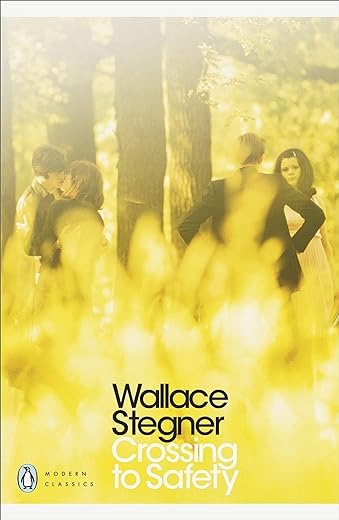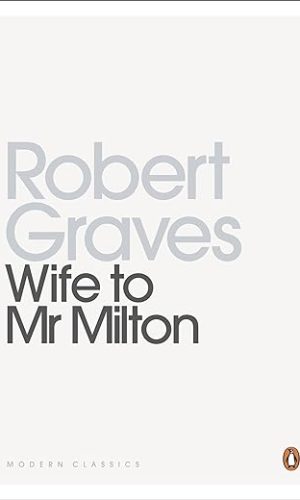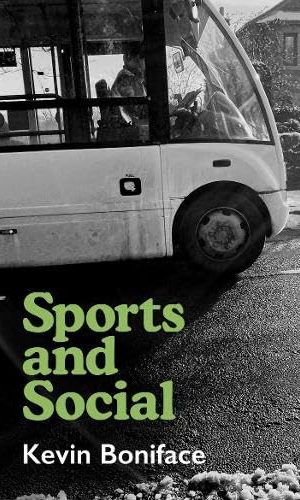Crossing to Safety: Wallace Stegner (Penguin Modern Classics)
£8.70£9.50 (-8%)
A novel of the friendships and woes of two couples, which tells the story of their lives in lyrical, evocative prose by one of the finest American writers of the late 20th century.
When two young couples meet for the first time during the Great Depression, they quickly find they have much in common: Charity Lang and Sally Morgan are both pregnant, while their husbands Sid and Larry both have jobs in the English department at the University of Wisconsin. Immediately a lifelong friendship is born, which becomes increasingly complex as they share decades of love, loyalty, vulnerability and conflict. Written from the perspective of the aging Larry Morgan,Crossing to Safety is a beautiful and deeply moving exploration of the struggle of four people to come to terms with the trials and tragedies of everyday life.
With an introduction by Jane Smiley.
Wallace Stegner (1909-1993) was the author of, among other novels, Remembering Laughter, 1937; A Shooting Star, 1961; Angle of Repose (Pulitzer Prize), 1971; The Spectator Bird (National Book award), 1977; Recapitulation, 1979. Three of his short stories have won O.Henry prizes, and in 1980 he received the Robert Kirsch award from the Los Angeles Times for his lifetime literary achievements. His collected stories were published in 1990.
Jane Smiley is the author of many novels and works of non-fiction, including, most recently, “Thirteen Ways of Looking at the Novel”, about the history and anatomy of the novel. Her most recent novel is “Good Faith”. She won the Pulitzer Prize in 1992 for “A Thousand Acres”, and was shortlisted for The Orange Prize in 2001 for Horse Heaven.
Read more
Additional information
| Publisher | 1st edition (5 Sept. 2013), Penguin Classics |
|---|---|
| Language | English |
| Paperback | 352 pages |
| ISBN-10 | 0141394951 |
| ISBN-13 | 978-0141394954 |
| Dimensions | 12.9 x 2 x 19.8 cm |










by J. Scott-mandeville
(This review contains spoilers.) I’m afraid I found this book stagey, contrived, and egocentric to the point of absurdity. Semi-autobiographical, the whole story of these four rather pretentious (and privileged) academic people did not inspire sympathy, empathy, or even much interest. The pace, drawing through 2 couples’ lives from student to middle age, was ploddy, the dilemmas – financial, medical, academic – were irritating rather than interesting; the characters lacked vivacity and personality. Sally (the narrator’s wife) was sketchily drawn, an image of patient Griselda; her counterpart, Charity, Sid’s OCD wife, was overblown and the fact that Sally contracted polio and Charity ended up dying of cancer came across as a rather misogynistic indictment of femininity rather than personal tragedy. Sid and Larry, the male protagonists of the story, appeared put upon or resignedly patient, i.e. men being manipulated by women. Sid and Larry were portentous, often pompous, and rarely insightful – a result of those qualities, or lack of them, in the author. The two women, as seen through the eyes of a mid-twentieth-century writer who seemed to have never heard of feminism outside the matriarchal machinations of Boston mothers, became unattractive stereotypes, reflections in Larry’s ego-centric eyes.
This last novel of Stegner places him in a long line of American chauvenistic novelists. There were pale evocations of the traditional woods and water images that permeate many American novels since Thoreau’s ‘Walden’; there were the trendy tropes that crop up regularly in American novels written by academics, especially those of the romantic wilderness. The long haul from struggling student to successful professor has been done with more style and panache and this book was basically boring. I have not read Stegner’s ‘Anger in Repose’ which won a Pulitzer prize in 1962, but I think Stegner rested on his laurels rather too long and any style he once had went flat.
I’m sorry to be so critical of a novel many reviewers seem to find an emotionally evocative, sensitive and intelligent. I was hoping for a much better read and was very disappointed. I read this for a book-club and I have to say that, with some reservations, most of the others in the bookclub meeting thought the same. Probably Americans would identify better with the characters and scenarios, but we didn’t.
by Mr. D. James
Stegner, Wallace. Crossing to Safety
Wallace Stegner tells the story of four friends, Larry and Sally Morgan and Sid and Charity Lang, who meet as new faculty members at Madison, Wisconsin. Sid and Charity are rich, while Larry and Sally are poor, but this disparity is soon forgotten as the Langs throw a party for all new members, at which performances are obligatory. The Langs proceed to adopt their poor relations, finding them intellectually stimulating and congenial. After a year, however, Larry is terminated despite his having published articles and a book, while, owing to the financial squeeze of the Depression, Sid is retained for just one more year. Early on it is established that Charity Lang is the leader of social and cultural events, insisting on the Morgans occupying their house over the summer vacation. Charity has plans, for everyone including the Morgans their ‘adoptive’ family and their new-born daughter, Lang Morgan.
Mostly the tone is reminiscential, as Larry recalls the glorious summer in Arcady before he became an editor for Uncle Richard in Albuquerque, a post in which he more than doubled his university salary. He has even managed to repay the Langs after several years, during which time both women have physically deteriorated – Charity, now a mulltiple mum, being stricken with cancer, Sally crippled with polio. But the parties continue, now with swarms of kids attached, as does Charity’s determination to divert her husband’s efforts from writing poetry into recognised scholarship.
I was thankful to find no happy ending, no tacked on or hopeful last episode – except for the symbolic survival of a presumed drowned mouse. As Larry says, ‘You can’t be close to the mortality of friends without being brought to think of your own.’ I felt that I had understood Larry and rooted for him in his battles with the redoubtable Charity, a finely drawn character whom I’d go a mile to avoid.